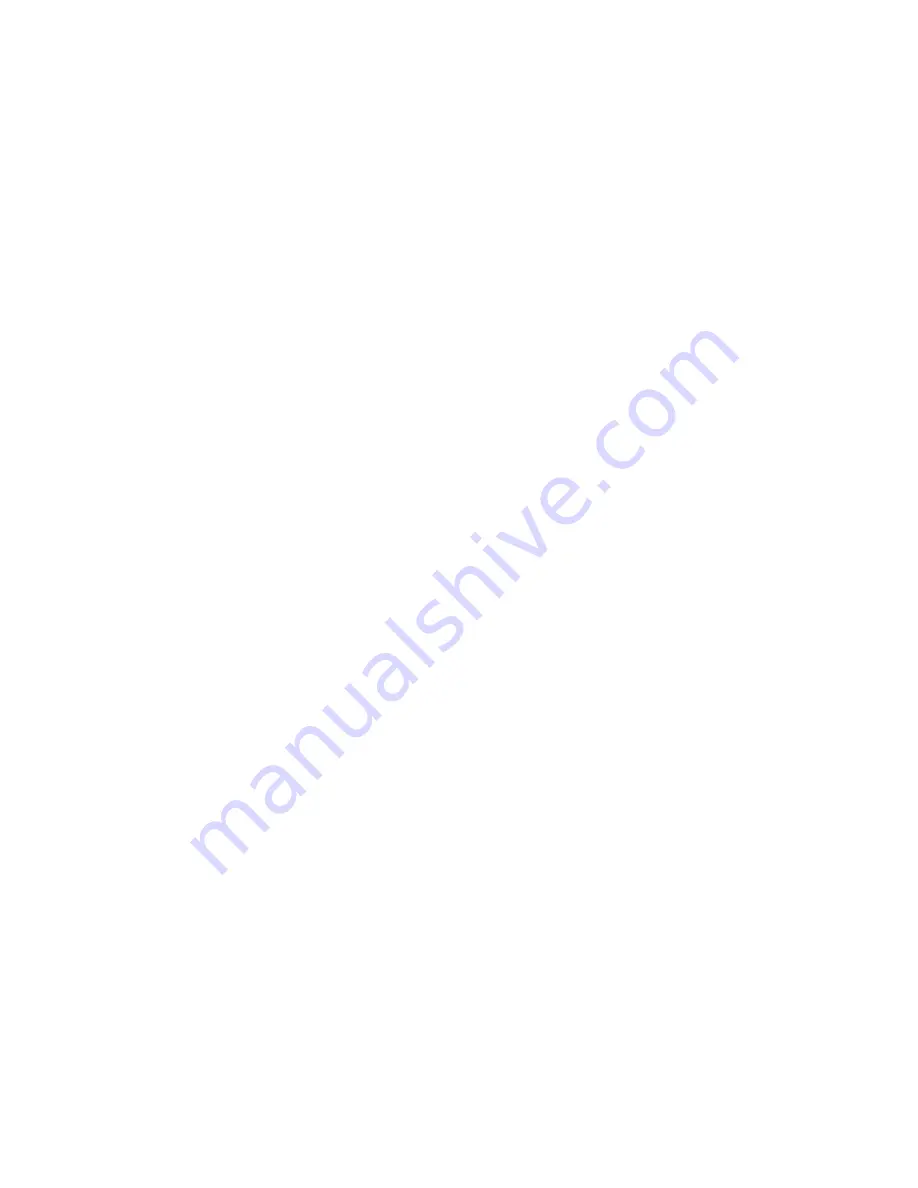
17
High-limit thermal switches must be replaced once the circuit
has been broken. The high-limit thermal cutout device is a
safety device only, not intended for continuous operation. This
device only operates when a problem exists; ANY condition
that causes high-limit cutout MUST be corrected immediately.
High supply voltage also causes excessive amperage draw, and
may trip the circuit breaker or blow the fuse(s) on incoming
power supply.
After proper airflow and supply power are assured, regular fil-
ter maintenance is important to provide clean air over the heat-
er. Dirt allowed to deposit on the heating element will cause
hot spots and eventual element burn through. These hot spots
will normally not be enough to trip the high-limit thermal cut-
out device, and may not be evident until actual heater element
failure.
Cabinet/Control Box Maintenance Light
An optional LED service light provides a source of illumina-
tion in the main unit cabinet and the control box during routine
maintenance and troubleshooting in dark ceiling spaces.
When power is turned "OFF" for maintenance or troubleshoot-
ing, the control box/cabinet light will turn "ON" as soon as
control box/cabinet door is open (see Fig. 20).
Electrical Wiring and Controls
Refer to wiring diagram attached to unit for type and number
of controls provided on each unit.
Verify integrity of all electrical connections at least twice
during the first year of operation. Subsequently, all controls
must be inspected periodically for proper operation. Some
components may experience erratic operation or failure due to
age. Wall thermostats may also become clogged with dust and
lint, and must be periodically inspected and cleaned to provide
reliable operation.
When replacing any components such as fuses or relays, use
only the exact type, size and voltage component as furnished
from the factory. Any deviation without factory-authorization
could result in personnel injury or damage to the unit. This will
also void all factory warranties. Only factory supplied replace-
ment parts ensure that the warranty and agency status remain in
effect. All repair work shall be done in such a manner as to
maintain the equipment in compliance with governing codes,
ordinances and testing agency listings.
Drain
Inspect drain before initial start-up, and prior to each cooling
season to assure that drain trap and line are clear. When
clogged, clear the debris so condensate easily flows.
Periodically inspect drain during cooling season to maintain a
free-flowing condensate. Units are provided with a secondary
or “tell-tale” drain connection that will indicate a clogged
main-drain line by flow from “tell-tale” connection.
Should algae and/or bacteria growth become a concern, con-
sult an air conditioning and refrigeration supply organization
familiar with local conditions for chemicals, or other solu-
tions available to control these agents.
Filters — Throwaway
Throwaway type filters; commonly used on fan coil units must
be replaced on a regular basis. The time between replacement
should be established based on regular inspection of filter, and
also recorded in the log for each unit. Refer to Table 4 for ap-
propriate filter dimensions compatible with each unit size. If
replacement filters are not purchased from factory, filters used
should be the same type and size as factory, or recommended
by factory. Extended surface filters must not be used due to
high air pressure drops encountered with these types of filters
being incompatible with the type of fan coil unit covered in this
manual. Consult factory for applications using filter types oth-
er than factory standard or optional product.
Filters — Replacement and Installation
Each unit is equipped with return air filters. Filters must be pe-
riodically replaced.
The 42DH units' filters are 1 in., 2 in., or 4 in. thick. Filters can
be easily accessed from the side or bottom of the filter rack
(see Fig. 23).
To remove filters from the side of the filter rack:
1. Remove the side access panel (A) of the filter rack by pull-
ing tab at the bottom of the panel to free from magnets,
and lower it out of the slot (B) in the top of the filter frame.
2. Pull out dirty filters.
3. Replace with new appropriate size filters.
4. To re-install side access panel into filter rack:
a. Insert the tab of panel into the slot in filter frame's top
(B).
b. Rotate panel toward the frame, ensure magnets are
engaged.
To remove filters from the bottom of the filter rack:
1. Open hinged bottom access panel (C) - pull down to disen-
gage magnets.
2. Pull out dirty filters.
3. Replace with new appropriate size filters.
4. Secure bottom access panels, make sure magnets are re-
engaged.
The 42DH units are designed to accept various filter sizes de-
pending on job requirements. Each filter frame is equipped
with filter support angle brackets (D) and 1 in. or 2 in. filter
slots on all four sides of filter frame. The filter support angle
brackets (D) are designed to provide guidance and support to
the new filter as it is being inserted.
In order to accommodate 1 in. and 2 in. filters, the bracket
should be inserted into corresponding slots on all sides of the
filter frame (see Fig. 23) and secured with screws. When 4 in.
filter is installed, the brackets should be stored for future use
with different filter thickness, or discarded if 4 in. filter will be
always used.
















































